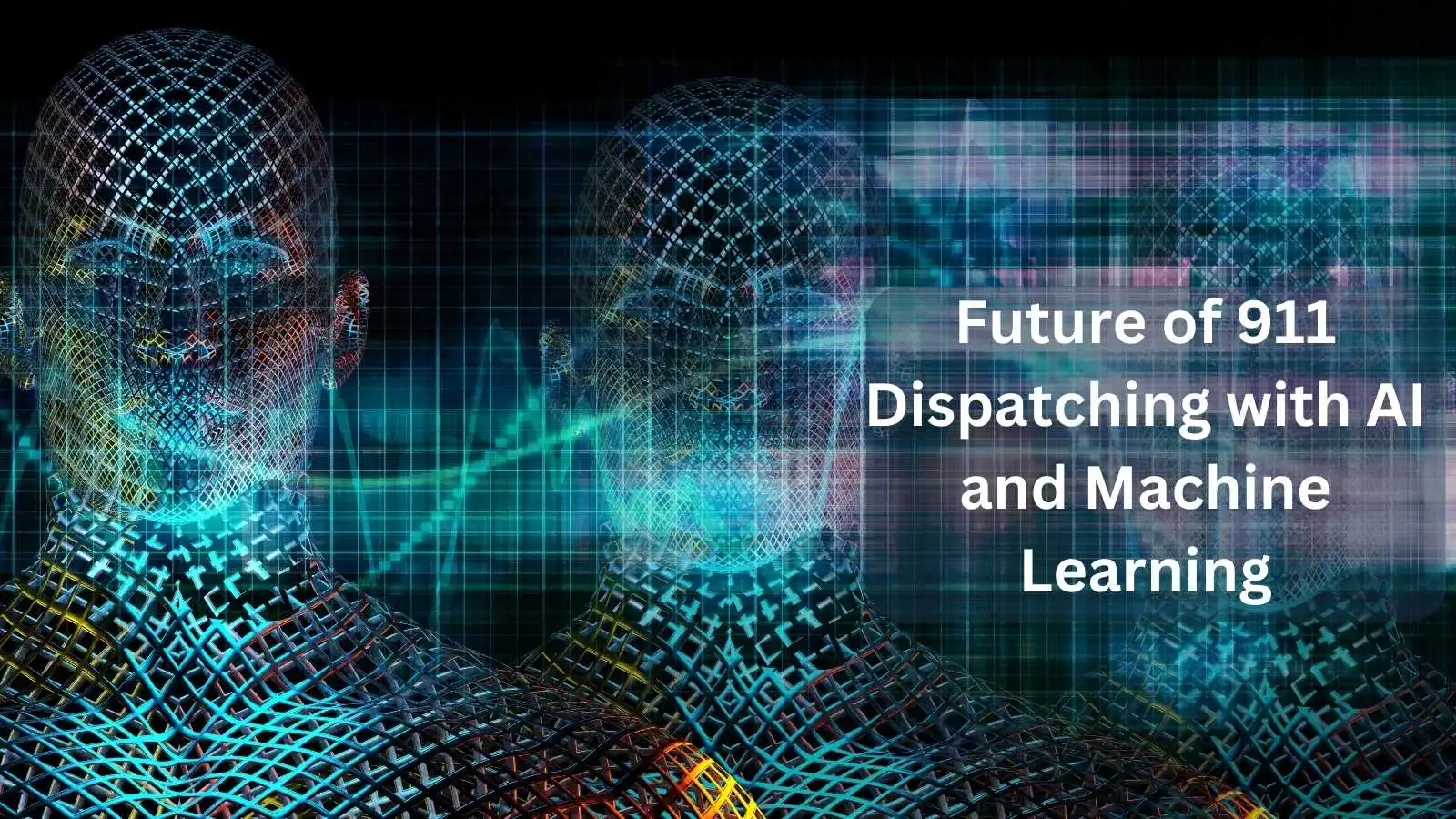The 911 emergency system is a vital component of public safety, responsible for receiving and responding to emergency calls for assistance. However, the current system faces several challenges, including high call volume, limited resources, and difficulty in triaging calls to determine the level of urgency. Integrating artificial intelligence (AI) and machine learning (ML) technologies can revolutionize the 911 emergency system and improve the efficiency and effectiveness of the emergency response. This blog will explore how AI and Machine Learning (ML) can help 911 dispatchers overcome these challenges.

Understanding AI and Machine Learning in 911 Dispatching
AI and machine learning enable computers to perform tasks that typically require human intelligence, such as learning, problem-solving, and decision-making. In 911 dispatching, AI and machine learning could automate specific tasks, such as call routing and triage, and analyze data to identify patterns and improve response times.
For example, AI-powered systems could automatically route calls to the appropriate emergency responders based on the type of emergency, location, and other relevant factors. Additionally, machine learning algorithms could be used to analyze data from past emergency calls to identify patterns and predict future emergencies, which could help 911 dispatchers to respond more quickly and efficiently.
Current Challenges in 911 Dispatching
High Call Volume and Limited Resources
911 dispatchers are often overwhelmed by the high volume of calls, leading to delays in response time and increased stress levels. Additionally, emergency services are often stretched thin, with limited resources to respond to all the calls they receive.
Difficulty in Triaging Calls
Determining a call’s urgency level is crucial for an effective response. Still, it can be challenging for dispatchers to assess the situation based on the information provided by the caller. This can lead to delays in response time and misallocation of resources.
Limited Ability to Predict and Prevent Emergency Situations
911 dispatchers are reactive by nature, responding to calls as they come in rather than anticipating and preventing emergencies. However, AI and ML can help predict and to avoid emergency situations with the correct data.
How AI and Machine Learning Can Improve 911 Dispatching
Automated Triage and Routing of Calls
AI and ML algorithms can automatically triage incoming 911 calls based on the situation’s urgency. This can reduce the number of non-emergency calls and ensure that emergency calls are routed to the appropriate dispatchers and first responders. For example, AI algorithms can automatically detect and prioritize calls that involve critical medical conditions, such as heart attacks or strokes, and route them to specialized medical dispatchers.
Predictive Analytics for Resource Allocation
AI and ML can also help optimize resource allocation in 911 Dispatching. Predictive analytics can forecast the number of calls and the resources needed to handle them. This can help dispatchers, and first responders anticipate and prepare for high-demand periods and ensure sufficient resources are available to take emergency calls.
Improved Communication and Coordination
AI and ML can improve communication and coordination between emergency services, allowing for a more efficient and effective response. For example, AI-based systems can create real-time maps of emergencies, which can be shared with other emergency services to help them make better-informed decisions.
Enhancing the Accuracy of Data and Real-Time Tracking
AI and ML can be used to improve the accuracy of data and real-time tracking of emergency services. This can help dispatchers better understand the situation on the ground and make more informed decisions.
Language Translation for Non-English Speakers
One of the challenges faced by 911 Dispatching is language barriers. Non-English speakers may have difficulty communicating with dispatchers, which can delay the response time and put lives at risk. AI and ML algorithms can help overcome this challenge by providing real-time language translation for non-English speakers. This can ensure that all 911 calls are handled efficiently, regardless of the caller’s language.
Integration With IoT Devices and Smart City Infrastructure
AI and ML can also help integrate 911 Dispatching with other technologies and systems, such as Internet of Things (IoT) devices and smart city infrastructure. For example, AI algorithms can automatically process data from IoT devices, such as surveillance cameras and traffic sensors, to provide real-time information about traffic conditions and potential hazards. This can help dispatchers and first responders to respond more quickly and effectively to emergency situations.
Challenges and Considerations
While the potential benefits of AI and machine learning in 911 dispatching are significant, several challenges and considerations must be considered. One of the main challenges of using AI and ML in 911 Dispatching is data privacy and security. 911 calls contain sensitive personal information that must be protected from unauthorized access and breaches. Therefore, it is essential to ensure that AI and ML algorithms are secure and that appropriate measures are in place to protect personal data.
Another important consideration is proper training and education for 911 dispatchers and other emergency responders on using AI and machine learning. As these technologies become more prevalent in 911 dispatching, it will be important to ensure that dispatchers are properly trained to use them and understand their limitations.
Finally, the cost and scalability of AI and ML solutions for 911 Dispatching are important considerations. Implementing AI and ML systems can be costly, and not all jurisdictions may have the budget to invest in these technologies. Additionally, scalability is also a concern as 911 Dispatching systems to need to be able to handle a large number of calls and handle them efficiently. It is important to consider the cost-benefit of implementing AI and ML systems and to ensure that they can scale to handle the volume of calls.
Conclusion
AI and Machine Learning have the potential to revolutionize 911 Dispatching by improving the efficiency and effectiveness of the emergency response. By automating triage and routing of calls, optimizing resource allocation, providing real-time language translation, and integrating with other technologies, AI and ML can help save lives and improve public safety. However, it is important to consider the challenges and considerations such as data privacy, ethical implications, cost, and scalability when implementing these technologies in 911 Dispatching systems. With the right approach, the future of 911 dispatching with AI and machine learning can significantly benefit public safety and emergency response.

My relatives every time say that I am killing my time here at web,
however I know I am getting familiarity daily by reading thes good posts.